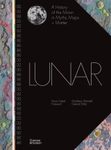"Journalist Dillow packs quite a punch with this volume about humanity's expanding understanding of the threat posed by objects from space [...] Revealing the estimated chances of a disastrous strike over the next century to be low but not zero, this enjoyable survey should have appeal beyond pop science fans to the researchers and officials concerned with preparing for such a potentially calamitous event."
– Publishers Weekly
"In an accessible and always entertaining narrative, Dillow shares the somewhat alarming news that objects from outer space collide with Earth's atmosphere on a regular basis [...] [He] describes unimaginable catastrophes with such detail that readers feel like eyewitnesses and reimagines vast expanses of space as easily digestible scenarios [...] Dillow [makes a] compelling argument that we really should be paying more attention to the heavens."
– Booklist
"A century ago, Scribner published a book about how the world, as many knew it, was ending. It was called The Great Gatsby. Fire in the Sky is our generation's contribution to this crucial theme. Gordon Dillow has written a beautiful and riveting book, a thunderous book, about how we might defend our planet from the collision with a comet or an asteroid that is surely to come."
– David H. Levy, co-discoverer of the Shoemaker-Levy 9 Comet, author of Skywatching, Science Editor at Parade, and columnist for Sky and Telescope
"Just when you thought you had enough worries, it looks like chunks of the sky will indeed someday fall. Gordon Dillow's breezy, gentle humor proves an engaging vehicle for absorbing his well-researched, quite serious subject. What's amazing is how refreshing it feels that, at least this time, we're innocent of the resulting global havoc."
– Alan Weisman, New York Times bestselling author of The World Without Us and Countdown
"The scope of Fire in the Sky is epic – covering millions of years and spanning the solar system as well as the globe – yet the effect is intimate: Gordon L. Dillow writes with an irresistible You can't make this stuff up sense of personal wonder about asteroid impacts measured in Hiroshimas, the kind of character who manages to misplace a 40-pound chunk of meteorite while on a three-day bender, and the scientists of today who cheerfully go about their work while knowing the end is, if not nigh, inevitable."
– Richard Panek, author of The 4% Universe and The Trouble with Gravity
"Nobody wants to contemplate a giant asteroid smashing into their hometown. But such a catastrophe is basically inevitable, if we don't take measures to prevent it – it's just a matter of when. In Gordon Dillow's engrossing book, we learn a lot about the Solar System, and more important, about our fascination with bodies moving through the skies. That these considerations might someday save our species is a bonus."
– Sean Carroll, author of The Big Picture: On the Origins of Life, Meaning, and the Universe Itself
"Informative, timely and entertaining [...] a great read! Dillow's treatment is never dull – often humorous – and provides accurate information about the potential of near-Earth asteroids for space resources, their impact threats to Earth, and the ongoing activities to mitigate these threats."
– Donald K. Yeomans, author of Near-Earth Objects: Finding Them Before They Find Us, and former manager of the Jet Propulsion Laboratory's Near-Earth Object Program Office
"Lucid and engaging [...] a comprehensive look at the threat to our planet from asteroid impacts [...] Dillow stresses that the threat is real, that the Earth is routinely hit by objects from outer space, and that it is certain that sometime in the future – maybe in coming decades, maybe millions of years from now – unless mitigating actions are taken one of those objects will be large enough to cause catastrophic damage [...] A convincing case for the need to pay more attention to planetary defense."
– John M. Logsdon, Founder of the Space Policy Institute at George Washington University, NASA advisor, and editor of The Penguin Book of Outer Space Exploration
"It's only a matter of time before a really large space object hits the Earth. Asteroids and comets have created disaster many times in the Earth's past, including the impact that wiped out the dinosaurs, and the vestiges of their havoc are still apparent. Gordon Dillow's enthralling discussion unlocks the secrets of how and why these objects jeopardize the planet and what thousands of people around the globe are doing to detect and defend against them. Fire in the Sky is nonfiction that reads like a great adventure novel even as it points toward a hopeful future for humanity."
– Roger D. Launius, former Chief Historian for NASA and author of The Smithsonian History of Space Exploration
"The number one threat to the extinction of the human species is a huge asteroid hurtling out of the deep cosmos on a collision course with Earth. This is the book to read before that happens. Compelling and lively, Fire in the Sky is a critically important call to action, because for the first time in our history we can build a defensive system to avoid that fate."
– Stephen Petranek, former Editor-in-Chief of Discover and Washington Post magazine, and author of How We'll Live on Mars
"A comprehensive and informative treatment of the past, present and potential future of asteroids – whether they be globally hazardous or infinitely valuable."
– Chris Lewicki, CEO of Planetary Resources and former Flight Director of the Mars rovers Spirit and Opportunity



























